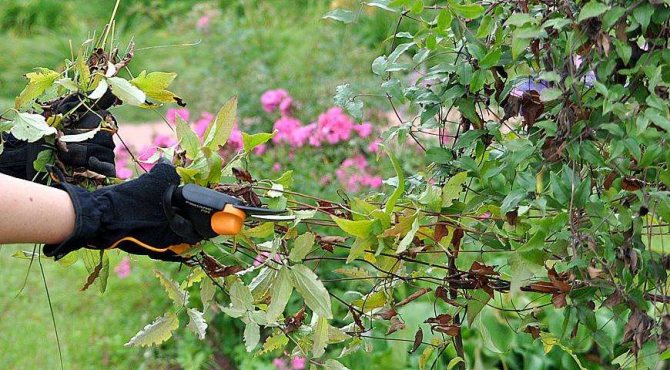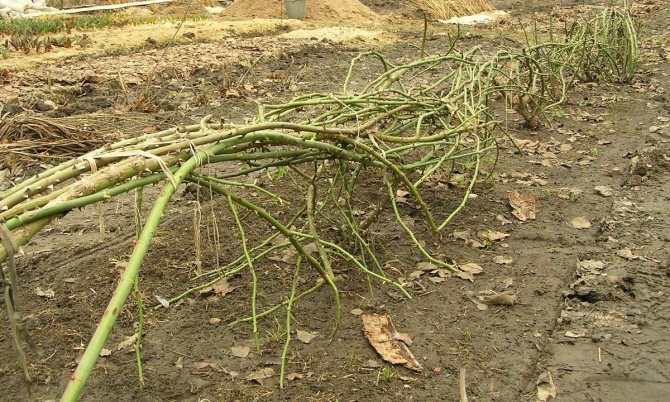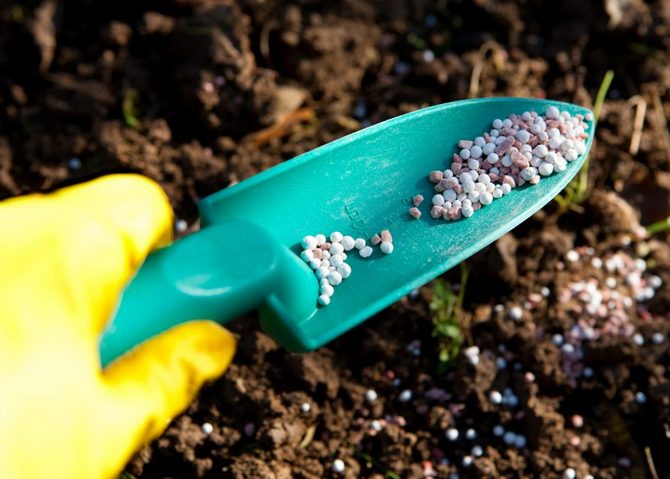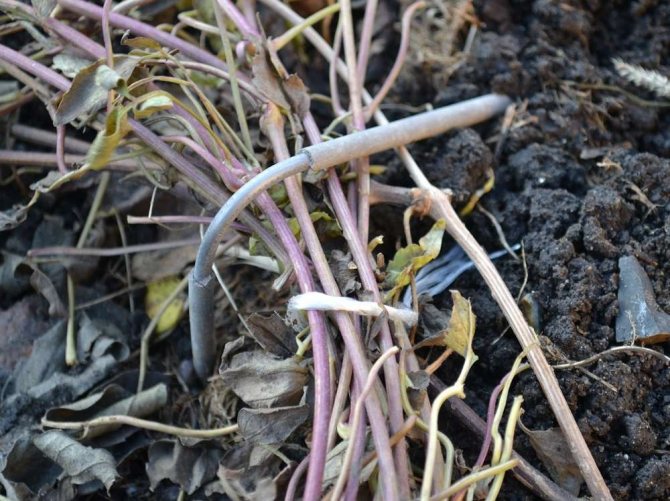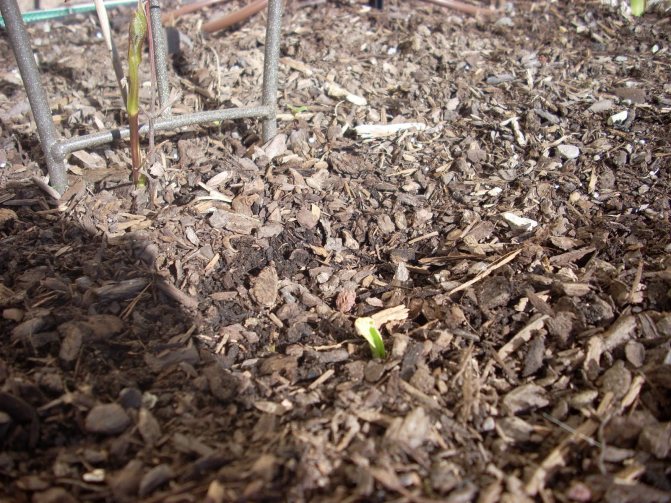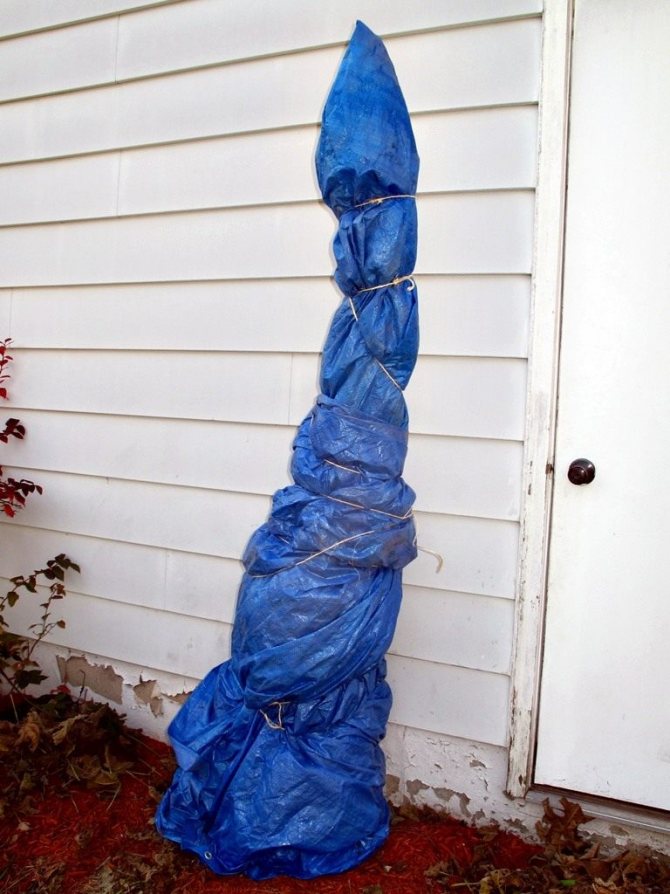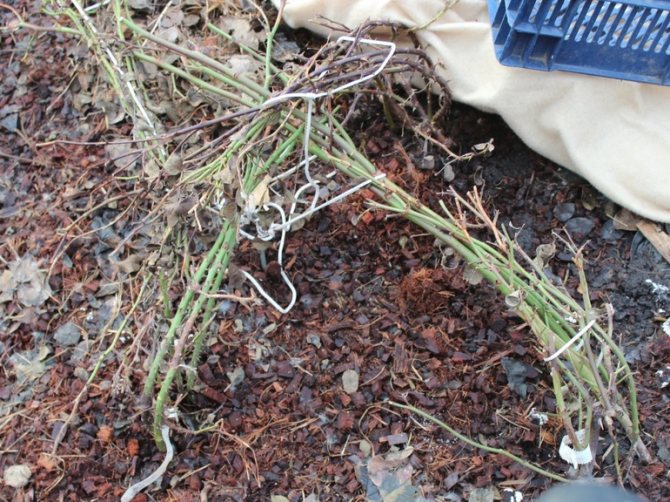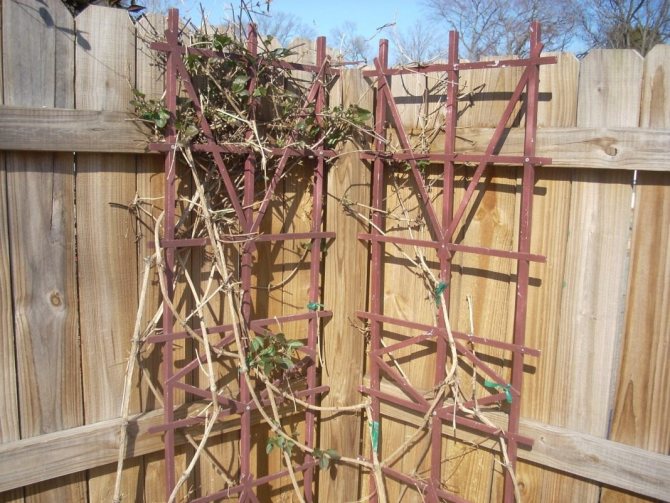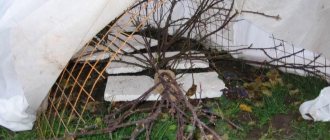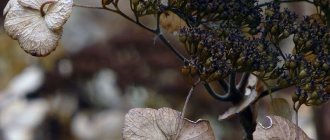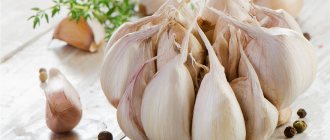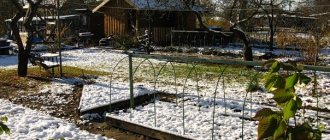Clematis is a plant of rare beauty, due to which it is actively used in landscaping walls, facades, and just gardens. This vine is quite unpretentious - with proper care, it can delight its owners for two decades. And yet, preparing clematis for the winter, pruning and sheltering clematis for the winter are tasks that must be performed.
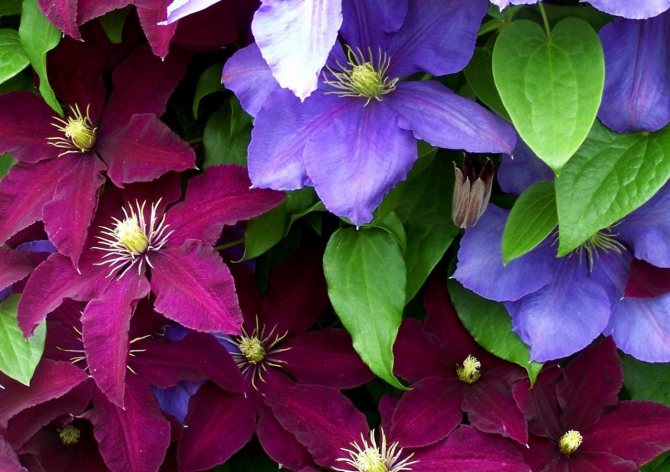
Types and varieties of clematis in the Moscow region
Ballerina (lat.Balerina)
One of the longest flowering clematis, liana blooms from May to September. White Clematis, Ballerina varieties are a real find for gardeners who prefer vines with large flowers, up to 15 cm.
Variety Nadezhda (lat.Nadezhda)
A Soviet variety with large, light-burgundy flowers, reaching 14 cm.The petals have a pointed shape, so the flowers, when opened, resemble stars and are clearly visible.
Fresh articles about garden and vegetable garden
Honeysuckle: planting and care in the open field
Barberry: planting and care in the open field, photo
Hibiscus: planting and care in the open field
Nikolay Rubtsov (Latin Nikolaj Rubtzov)
The variety is distinguished by lilac flowers, on the petals of which the contour is repeated with stains of the same color. Plant height does not exceed 2.5 meters, flowers are large, up to 17 cm in diameter. Clematis varieties Nikolay Rubtsov bloom from May until the end of summer, continuously replacing one flower with another.
Clematis Ville de Lyon (lat.Ville de Lyon)
One of the brightest clematis, the flowers of which are painted in a rich red color with a tint of fuchsia. The petals are ovoid and unevenly colored, giving the flowers the exotic look of a tropical plant.
Varietal features
The need for pruning depends on the timing of flowering, as well as on the varietal characteristics of clematis. Winter care, including trimming procedures, is carried out according to the following principles:
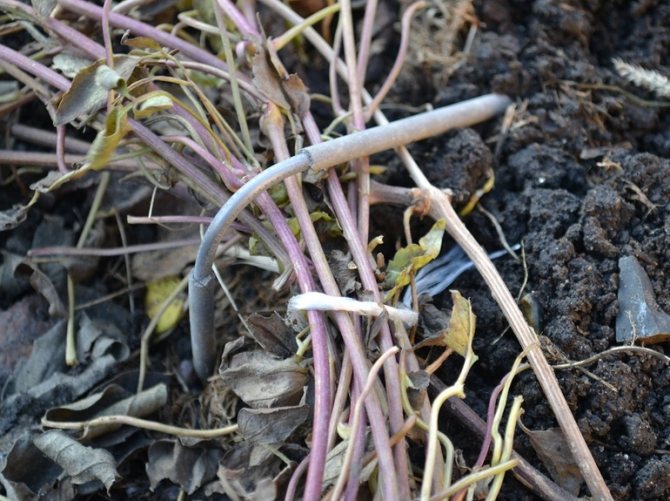

- Plants that bloom only on the shoots of the current year require complex autumn pruning. These include the Zhakmana, Vititsella and Integrifolia varieties.
- Clematis, which bloom on last year's shoots, do not lend themselves to formative pruning, but are only cleared of dead, sick or rotted branches. When processing such a crop, you need to leave shoots and flower buds for the next season. Among these plants are very tall varieties, as well as various forms of mountain, alpine and golden clematis.
- Varieties that bloom twice a season are cut slightly. However, this procedure is mandatory when preparing for wintering. Representatives of the Lanuginoza and Florida groups lend themselves to pruning.
But the opinions of gardeners about pruning the second and third types of plants differ. On the one hand, there are exceptions among the different groups of clematis, and on the other, most varieties that supposedly bloom only on last year's shoots are capable of blooming on both young and overwintered branches.
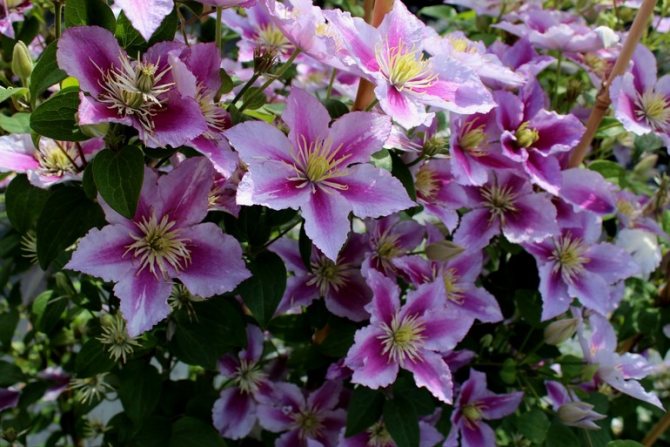

In any case, all varieties require regular sanitation and cleaning of dead, sick or wilting shoots. Regardless of the type of flowering and the autumn formative work, all the bushes lend themselves to the following procedures:
- Removal and harvesting of all dry leaves, followed by destruction away from the vines.
- Removal of dry shoots.
- Removal of damaged branches showing signs of serious disease and weak or poorly productive shoots.
Watering clematis for winter
In the fall, clematis especially need timely, abundant watering, which ensures the moisture recharge of the plants. Do not forget that the older the clematis bush, the more abundant the watering should be. In this case, the soil of the trunk circle must be carefully loosened, increasing air exchange and preventing stagnation of water at the base. Excessive moisture contributes to the development of aggressive microorganisms that have an adverse effect on the root system of the flower.


Common mistakes of florists


The cultivation of spectacular vines sometimes causes controversy among gardeners about agricultural techniques. Nevertheless, there are a number of actions that, without a doubt, are considered wrong by all experienced summer residents and specialists:
- Some people forget to do hilling, but this procedure is very important. Even if clematis was wonderfully sheltered and did not suffer from frost in winter, in spring it may die due to stagnant melt water near the roots. This can be prevented by adding a bucket of humus or compost under each bush in the fall. You can remove the mulch from the bush after the snow has completely melted.
- In addition to diseases and harmful insects, clematis can be threatened by mice in winter. Having built a frame for insulation, the gardener gives rodents an excellent opportunity to build nests inside the shelter, nibbling clematis branches for this, in the spring he can expect a sad picture. Since such a possibility cannot be ruled out, it is imperative to put a poisoned bait inside the frame structures, then your clematis will definitely remain unharmed.
- Sometimes, wanting to quickly make sure that clematis has endured the winter well, the owner of the site impatiently and not too carefully rakes the soil at the base of the bush. As a result, fragile young shoots growing from the ground are damaged, and the plant stops growing, later launching a reserve bud. Rake the soil from the shrubbery very slowly and carefully.
- Often the reason for the weak growth of clematis is an improper planting. If during the first 3-4 years new shoots hardly grow, it means that the plant was not buried in the way recommended by specialists. You can correct the situation by pouring a layer of earth 8-10 cm high into the base of the bush. But it is better, nevertheless, to transplant the plant according to all the rules.
It is the wrong wintering that most often causes the death of clematis. Although this plant is very resilient and can revive even years later, it should not be tested for its endurance. Do the necessary preparation in the fall and properly cover your clematis so that it can delight you with its flowering. Do not forget also about the spring care, which includes timely watering and feeding, then the luxurious vine will present you with only pleasant surprises.
Clematis is a beautiful climbing plant that transforms the garden with its flowering lashes. You can decorate the arch with beautiful vines and decorate the wall picturesquely. They are good as living flowering hedges, delimiting garden areas. But the flowering time is passing, at the end of October, which means it's time to take care of the preservation of perennial vines, cut and cover clematis for the winter.
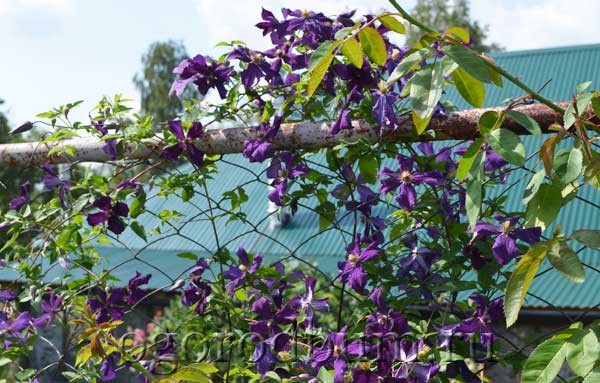

Preparing clematis for winter in the Moscow region
In the Moscow region, clematis have to be sheltered for the winter and quite thoroughly. Bushes with the onset of stable frosts or a little earlier are spud with dry peat or fertile soil to a height of 10-15 cm. Partially cut shoots are removed from the trellises, carefully laid on a support 10-15 cm high or spruce branches, pinned to the ground with arcs, covered with spruce branches, brushwood, and then some kind of waterproof material that is pressed with boards or stones so that the wind does not blow away. Snow will complete the work on the shelter, however, in the winter with little snow, it has to be collected from the paths and additionally poured onto the plants, especially to the base of the bushes.


Before winter, the site is deeply dug by embedding organic and em-fertilizers into the soil. Clematis can withstand severe frosts. It is recommended to cover them in areas where roses are covered.If the bases of their shoots are deepened by 10, 15 cm, then only in more northern zones, after pruning, the plants are covered with earth, peat, sand, covered with spruce branches, snow or other materials, with a layer up to 20-30 cm thick, due to which they tolerate frosts up to 30 -40 degrees Celsius, due to which they endure frosts down to -30, -40 degrees below zero. If it is required to preserve shoots in species, varieties and forms that bloom in last year's growth, they are removed from the support, shortened to 1.0-1.5 m, laid on the ground and covered. In spring, clematis open gradually as warm weather sets in.
Wintering preparation
To properly prepare the bush for the upcoming winter, you will have to remove the vines from the trellises. In this case, we are talking about clematis varieties that belong to the first group and are shortened by only a few centimeters. The task looks complicated only at first glance. With the help of a garden pruner, you need to cut off all branches at a level of 1.5-2 m from the ground. Then, from the bottom of the shrub, leaves and young shoots are carefully cut off, which have managed to "grab" the twigs and threads of the trellises.
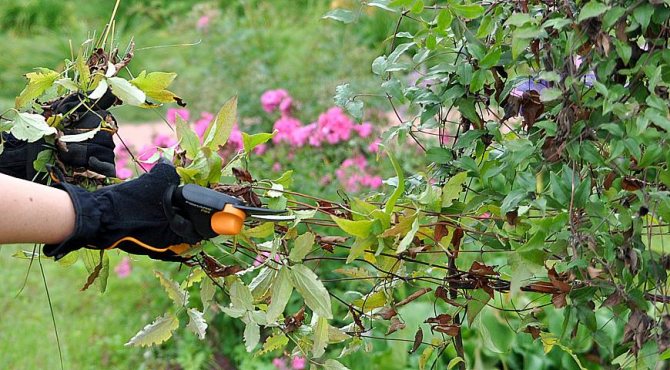

The choice of covering material depending on the type
You can cover clematis for the winter in various ways. When doing this, try not to overdo it, as lack of ventilation leads to mold and rot.
So, let's figure out how to cover clematis for the winter:
- Pour several buckets of earth or humus under the flower bush.
- Form a dense earthen mound that prevents the root system from getting wet and freezing.
- Make a "pillow" from old branches, fallen leaves, needles and planks.
- Place the clematis branches on the pillow.
- Cover the bush with lutrasil, polyethylene, roofing felt or any other covering material. Make holes for air intake.
Shelter must be shaded. Sunlight on the covering material contributes to the formation of condensation inside.
Shelter technologies for clematis for the winter in different regions
The preparation of a flowering perennial for the upcoming cold weather may differ in different climatic zones. Thus, the mild climate of the Volga region is characterized by frequent temperature drops. With a sharp warming, a flood is observed, an excess of moisture leads to rotting of the root system. Therefore, it is recommended to monitor the soil moisture level and periodically open the wrapped shrubs.
For the Moscow region, severe frosts and gusty winds are characteristic, while winters with little snow. In central Russia, it is better to grow frost-resistant varieties of clematis.
As for Siberia and the Urals, where a lot of snow falls in winter, it is necessary to cover more carefully thermophilic decorative crops. It is recommended to place a frame made of slats under the covering material to form additional protection against snow accumulation.
As a covering material, you can use sheets of polycarbonate or slate. The plant hidden inside is reliably protected from frost, but at the same time the air circulation is not disturbed.
Pruning clematis for winter
Also, when we are preparing clematis for winter, it is necessary to remember which group the clematis belongs to and what pruning should be.


The first group includes plants in which flowers are formed on the shoots of the previous year. This group includes species and varieties of the Atragena, Montana and others. They are grown without pruning, and before sheltering for the winter, only the tops of the shoots are cut off and you completely cut out the weak ones.
The second pruning group includes clematis, in which flowers develop both on the shoots of the current year and on last year's. These include the Lanuginoza groups, Florida, Patez. These clematis bloom early (on last year's shoots) - in late May - early June, but they do not bloom for long. And in summer, flowers appear on the shoots of the current year.The second flowering is more abundant and lasts until autumn. Clematis from this group are pruned in two steps. First, in the summer, they cut off the tops of the shoots of the previous year after flowering, and for the winter - the current one.
Fresh articles about garden and vegetable garden
Badan planting and care photos
Astilba growing and care photos
Pansies: growing from seed, when to plant?
In the fall of the first year of clematis life, it is cut in such a way that the shoot height is no more than 30 cm.It is thanks to proper pruning that a full-fledged root system develops in clematis, and this is a guarantee that in one and a half to two years the plant will delight you with beautiful flowering. Of course, you can do without unnecessary complications, leaving the plant to develop as it wants. But in this case, clematis is unlikely to become a garden decoration, rather it will resemble a cute, but very annoying weed that grows chaotically, completely unpredictably and at the same time excessively quickly.
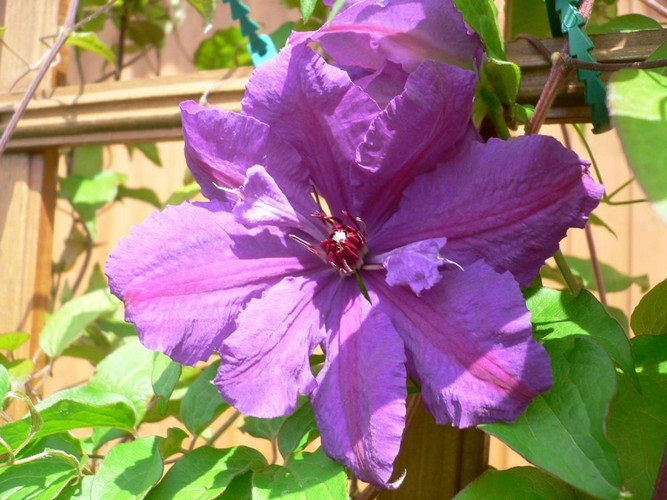

Useful Tips


In the spring, clematis needs to be provided with balanced care, which will allow it to quickly recuperate after a long winter, start metabolic processes and begin to form new shoots. In the spring, the culture needs to be watered abundantly, as well as fed with all kinds of mineral or organic fertilizers. They should contain a lot of nitrogen, potassium and phosphorus, as this is necessary for a set of green mass and rapid growth.
Clematis are the most beautiful garden flowers that surprise gardeners with their unrivaled beauty and long-lasting bloom. But, like other representatives of exotic flora, they are a rather capricious plant with high requirements for keeping conditions. Therefore, before you buy seedlings and plant them on a private shrinkage, you need to make sure of their winter hardiness and ability to grow in the middle lane. Such varieties as "Leningradsky", "Cardinal" and "Clematis Beata" are perfect for such an area.
To grow healthy and beautiful clematis in the garden, you need to properly care for them, as well as do all the procedures related to pruning, storage in winter, opening in spring, and so on. In this case, the vine will thank the grower with unsurpassed flowering and good health.
Clematis in the garden are often used for backgrounds and floral arrangements. Skillfully picking up the varieties of this plant, you can get continuous flowering of the garden. Especially good are the large-flowered clematis, which are traditionally used to decorate gazebos and walls of houses, pergolas and arches. To preserve the thermophilic liana in the middle lane and in the northern regions, it needs a reliable shelter for the winter. Before this, the plant must undergo full preparation for the rest period, including pruning, feeding, preventive treatment for diseases and pests.
Shelter of clematis for winter in the Moscow region
Like other garden plants, clematis shelter can be done in different ways, only for Siberia you need to use more layers of material than for the Moscow region or the Leningrad region. Shelter needs to be done based on the color group:


Groups I-II (last year's shoots). These shoots need to be preserved, so they are carefully folded into an arc and pinned to the ground. Cover with spruce paws and dry leaves from above. Roofing material or film is laid with the topmost layer. The edges are pressed tightly.
Group III (young shoots). These short-cut shoots are the easiest to cover. First, like the rest of the groups, they are sprinkled, and a wooden box is placed on top. The material is thrown onto the box.
All clematis in front of the shelter are covered with sand and covered with peat, humus or sawdust up to 25 cm high.With the onset of spring, the shelter is gradually removed. First, they remove the film or roofing material, and when the danger of night frosts has passed, spruce branches. So, layer by layer, the plants are freed, giving them time to harden a little.Then the shoots are carefully straightened and pinned to the support.
How to properly cover clematis step by step
The question of wintering clematis must be approached individually, taking into account not only the climatic zone, but also the need for a particular plant for insulation. An adult, fairly winter-hardy bush can be covered directly on the support, but just in case, such plants are spud higher (to a height of 40 centimeters). In this case, even if the lashes freeze out, the root and root zone of the plant will remain, which will give it the opportunity to recover.
Young bush
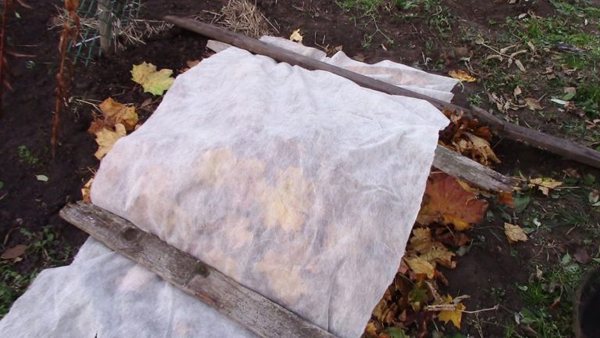

Young clematis always require more care than mature and strong ones. Shoots of a young liana in a winter with little snow can freeze even with slight frosts. Experienced gardeners usually use one of the following methods to warm young clematis:
- Plants that have undergone heavy pruning are first spud and then covered with a mulch layer of dry leaves or spruce branches. From above, the structure is covered with a film to protect it from moisture. During thaws, the film shelter is lifted from the sides for ventilation.
- Another method involves the use of inverted flower pots, which are used to cover the bushes after pruning. A layer of pine needles, sawdust or wood shavings is poured over the shelter, and after the first snowfalls, the formed mound is thrown with a snow mass.
- The easiest option is to spud the clematis cut off before wintering with peat, humus or compost. Before using organic matter, the bush and the soil near it must be treated with Fundazol to protect against fungal diseases.
It is the first wintering that is decisive and most difficult for the plant. In the future, having adapted to the local climate, the vine will be more resistant to adverse conditions.
Correct shelter of clematis before winter: video
What clematis can not be covered
Often newcomers are afraid of thermophilic crops because of the need to shelter them and fear of doing something wrong. They can be advised one thing - not to start varietal clematis that are initially difficult to care for.
For inexperienced summer residents, plants of the 3rd pruning group, blooming on the shoots of the current year, are quite suitable. On the eve of frost, the plants are cut shortly and covered with dry earth. The advantages of these clematis include not only ease of care. Such varieties are in no way inferior to their more capricious relatives in the ability to decorate the garden with abundant flowering, and sometimes even surpass them.

